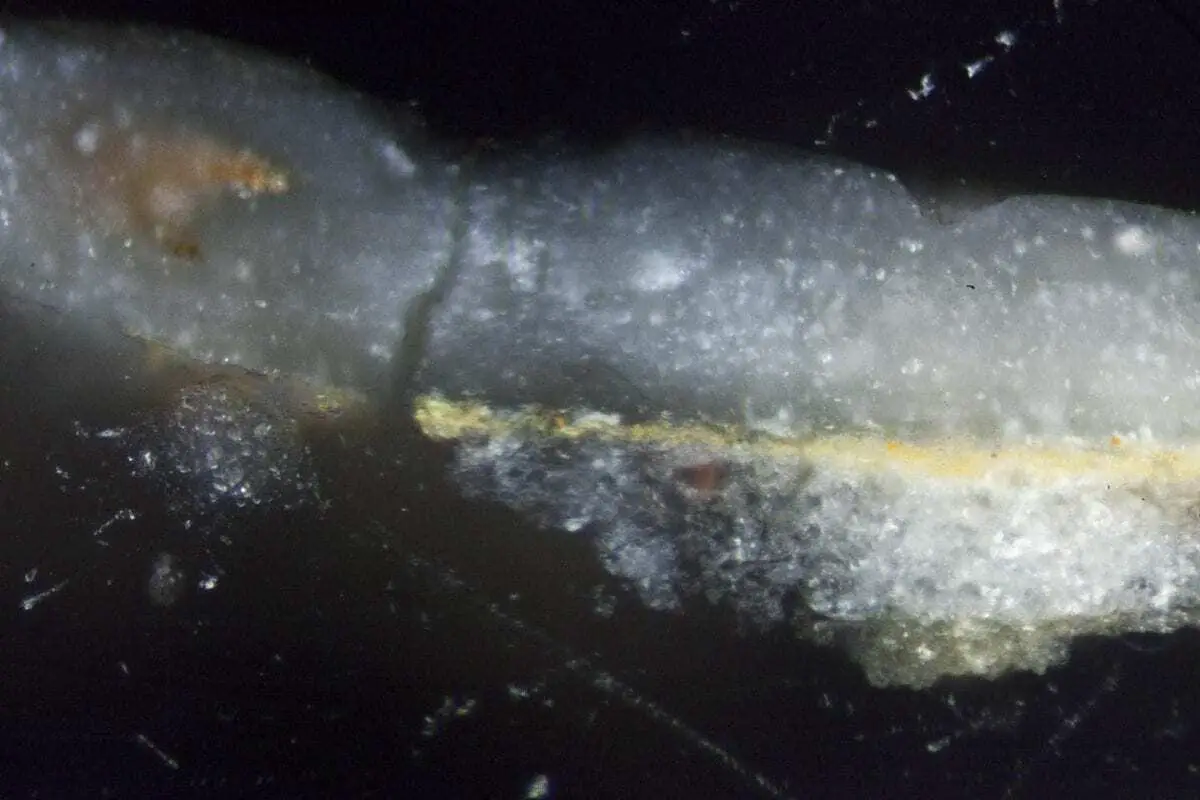Archaeologists have long known that artefacts from the Antiquity were far more colorful than one would think when looking at the bright white statues and temples, left behind for today.
The statues and buildings only appear white today because the colors have degraded over time; Initially, lots of colors were in use.
This was also true for King Apries I’s palace in Ancient Egypt. This palace was situated in the Nile Delta, and from here King Apries ruled from 589 to approx. 568 BC.
Fragments of the palace are today kept at the Glyptoteket Museum in Copenhagen, and recently they have been the focus of a collaboration between archaeologists from Glyptoteket, the British Museum, the University of Pisa and a chemist from the University of Southern Denmark.
– We are interested in learning more about the use of pigments, binders and the techniques associated with using them in the Antiquity. It has an obvious relevance for art historians, but it can also tell us about how different cultures in the Mediterranean and the Near East exchanged materials and knowledge and thus connected, says Cecilie Brøns, classical archaeologist at Glyptoteket.
With this in mind, the archaeologists have worked with professor of archaeometry Kaare Lund Rasmussen from the University of Southern Denmark.
Professor Rasmussen is an expert in conducting advanced chemical analyzes of archaeological objects. Among other things, he has examined the beard of renaissance astronomer Tycho Brahe, Italian monk skeletons, medieval syphilis-infested bones, sacred relics and the Dead Sea Scrolls.
For this project, he has taken samples of the palace fragments to learn more about the pigments and binders used.
– We have discovered no less than two pigments whose use in Antiquity has hitherto been completely unknown, says Kaare Lund Rasmussen.
These are lead-antimonate yellow and lead-tin yellow. Both are naturally occurring mineral pigments.
– We do not know whether the two pigments were commonly available or rare. Future chemical studies of other antiquity artifacts may shed more light, he says.
Lead-antimonate yellow and lead-tin yellow have so far only been found in paintings dating to the Middle Ages or younger than that. The oldest known use of lead-tin yellow is in European paintings from ca. 1300 AD. The oldest known use of lead-antimonate yellow is from the beginning of the 16th century AD.
Analyzing binders is more difficult than analyzing pigments. Pigments are inorganic and do not deteriorate as easily as most binders which are organic and therefore deteriorate faster.
Nevertheless, Kaare Lund Rasmussen’s Italian colleagues from Professor Maria Perla Colombini’s research group at the University of Pisa managed to find traces of two binders, namely rubber and animal glue.
The rubber is probably tapped from an acacia tree and served as a solvent for powdered pigment. Rubber was widely used as a binder, and it has also been found on stone columns in the Karnak Temple and murals in Queen Nefertiti’s tomb.
Animal glue was also commonly available. It was made by boiling animal parts, in particular, the hides and bones, in water to a gel-like mass that could be dried and pulverized. When needed, the powder was stirred with warm water and ready to use.
The researchers also found these color pigments:
- Calcite (white).
- Gypsum (white).
- Egyptian Blue (a synthetic pigment, invented in the 3rd millennium BC)
- Atacamite (green).
- Hematite (red).
- Orpiment (golden yellow).
UNIVERSITY OF SOUTHERN DENMARK
Header Image – This is yellow paint from the Palace of King Apries I. Credit : Ole Haupt/SDU





